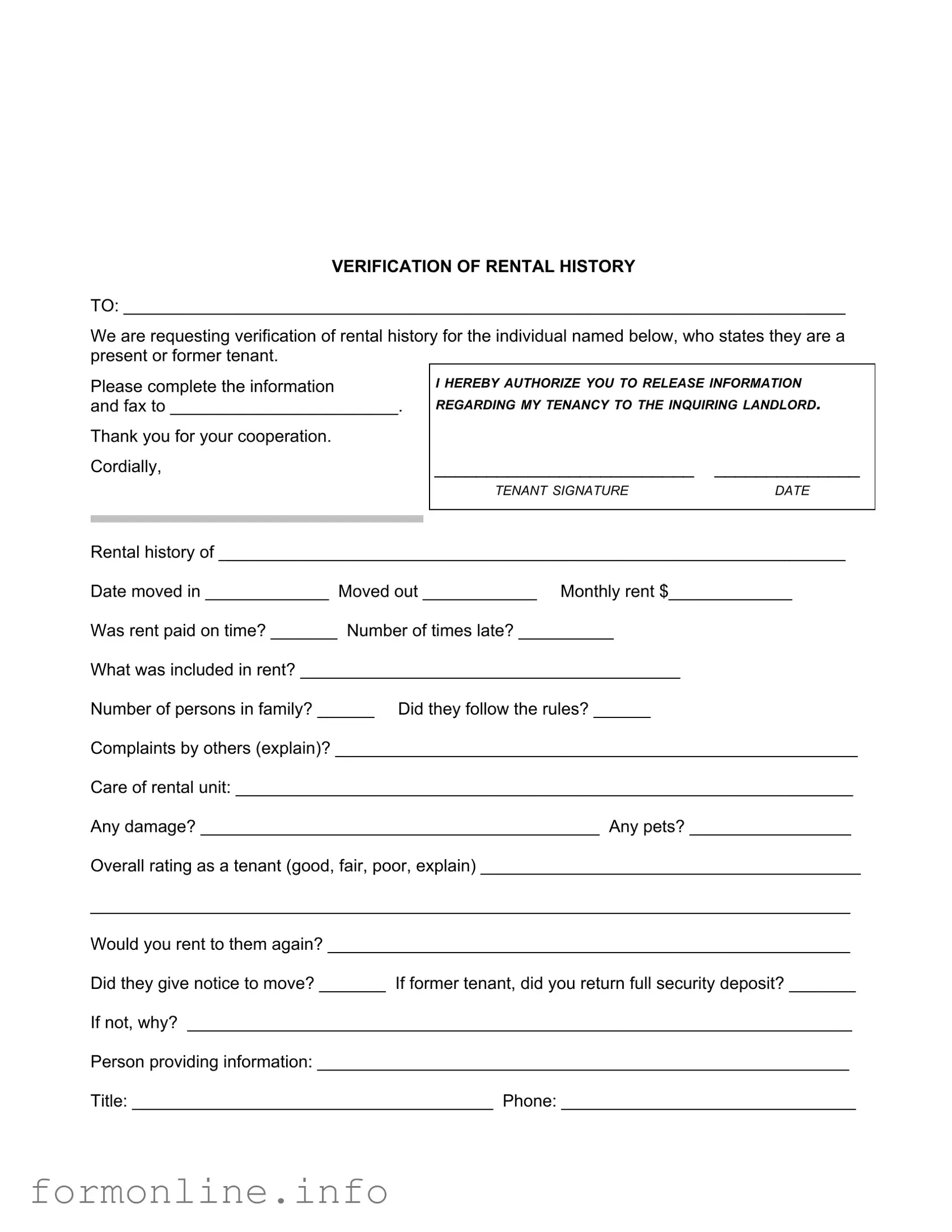VERIFICATION OF RENTAL HISTORY
TO: ____________________________________________________________________________
We are requesting verification of rental history for the individual named below, who states they are a present or former tenant.
Please complete the information |
|
I HEREBY AUTHORIZE YOU TO RELEASE INFORMATION |
|
|
|
and fax to ________________________. |
|
REGARDING MY TENANCY TO THE INQUIRING LANDLORD. |
Thank you for your cooperation. |
|
|
|
Cordially, |
|
_________________________ |
______________ |
|
|
TENANT SIGNATURE |
DATE |
|
|
|
|
|
|
|
|
|
|
|
|
Rental history of __________________________________________________________________
Date moved in _____________ Moved out ____________ Monthly rent $_____________
Was rent paid on time? _______ Number of times late? __________
What was included in rent? ________________________________________
Number of persons in family? ______ Did they follow the rules? ______
Complaints by others (explain)? _______________________________________________________
Care of rental unit: _________________________________________________________________
Any damage? __________________________________________ Any pets? _________________
Overall rating as a tenant (good, fair, poor, explain) ________________________________________
________________________________________________________________________________
Would you rent to them again? _______________________________________________________
Did they give notice to move? _______ If former tenant, did you return full security deposit? _______
If not, why? ______________________________________________________________________
Person providing information: ________________________________________________________
Title: ______________________________________ Phone: _______________________________
